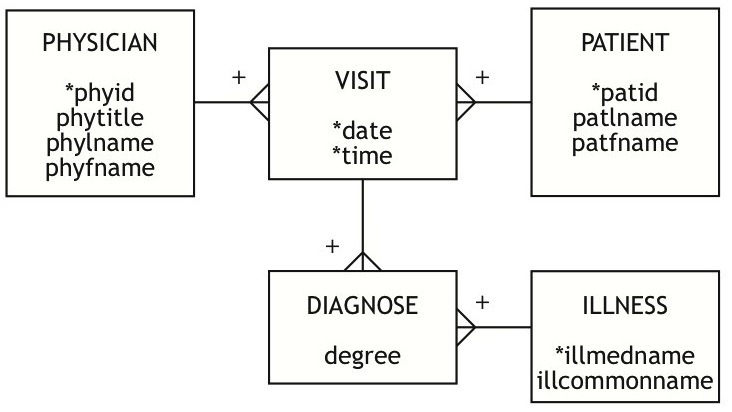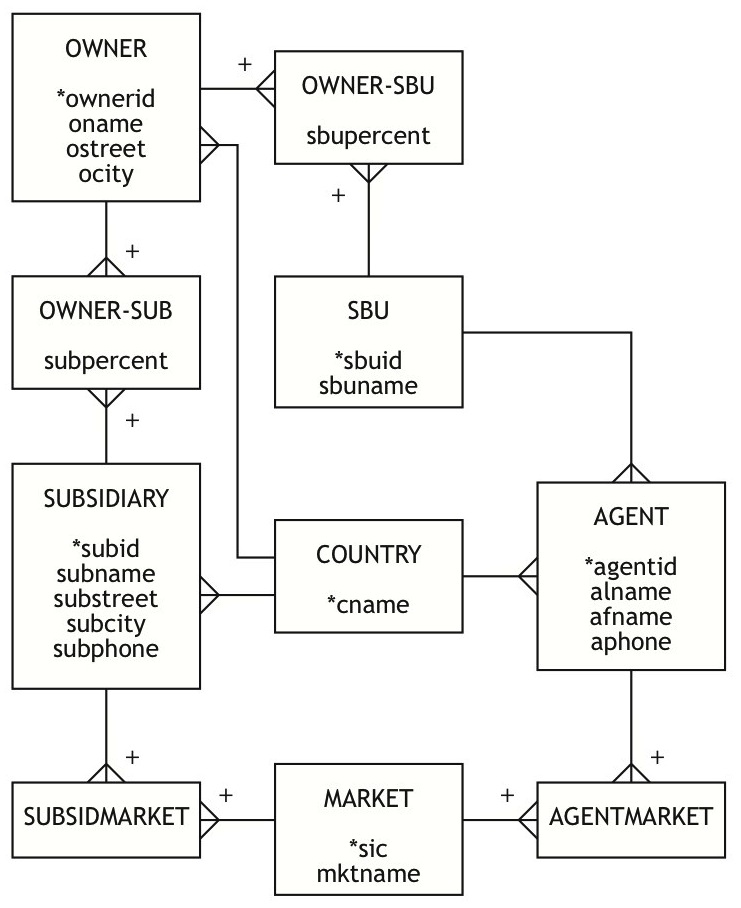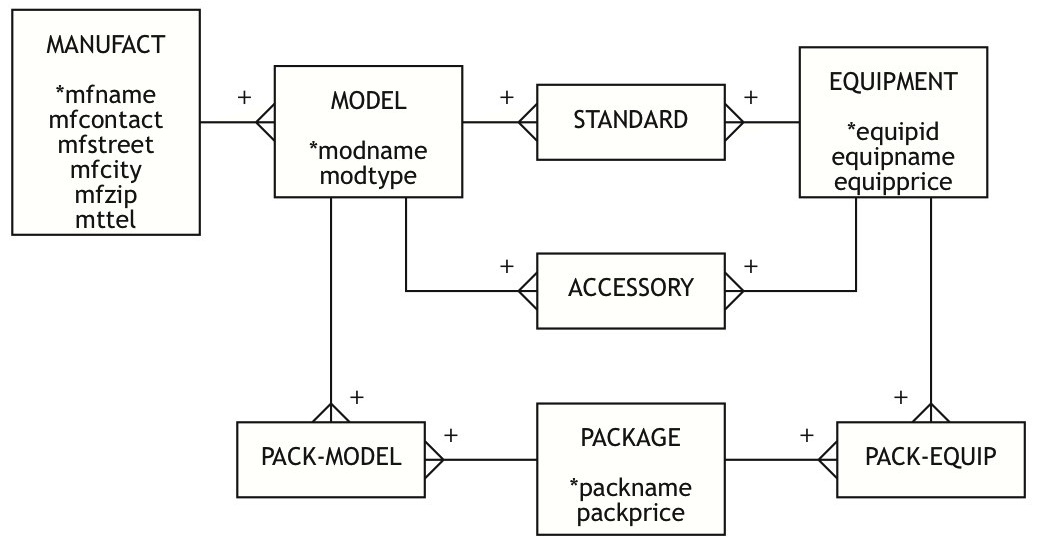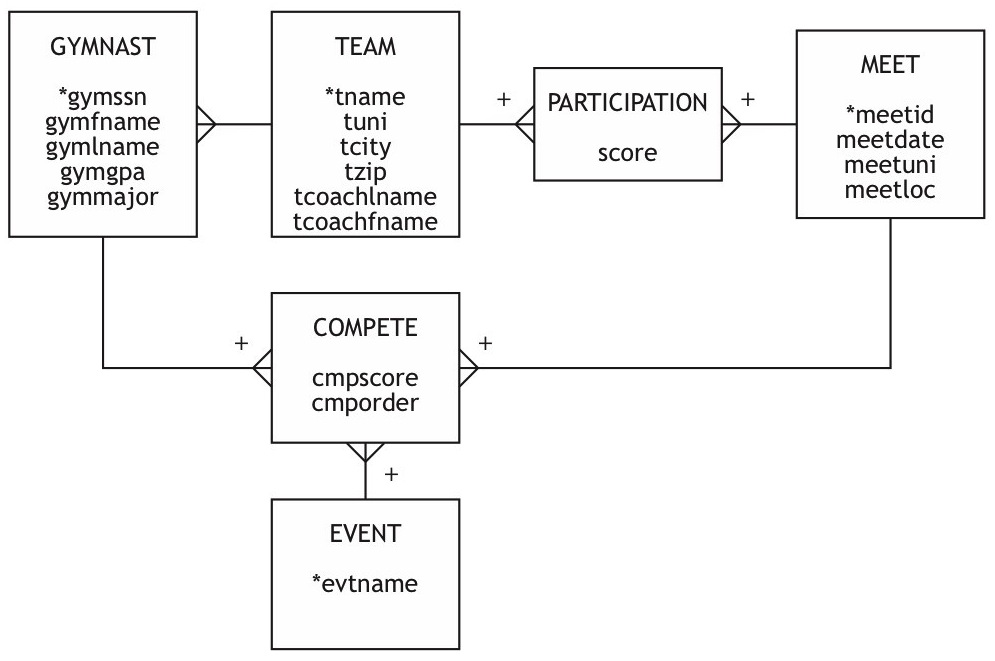Short Answers
- 1.
What is data modeling?
Data modeling is both a technique for modeling data and its relationships and a
graphical representation of a database. It is a method for determining what data and
relationships should be stored in the database. The data model is not concerned with
how the data should be stored.
- 3.
When do you label relationships?
Typically, relationship arcs should not be labeled. Only when there are
two relationships between two entities or if the relationship is not easily inferred
should you label the arc.
- 5.
How do you handle exceptions when data modeling?
Exceptions should be handled by the data model. Actually, it is recommended to go
"hunting for exceptions" to avoid a low-fidelity data model. One
should ask the client questions such as:
- Is it always like that?
- Would there be any situations where this could be an m:m
relationship?
- Have there ever been any exceptions?
- Are things likely to change in the future?
- 7.
Why might a data model grow?
A data model might grow as you expand the boundaries of the application. Some 1:m
relationships will become m:m relationships and you will add entities, attributes,
and relationships to faithfully describe the real world.
- 9.
How do you indicate ordering of instances in a data model?
To handle ordering of the instances in a database, create a new attribute which
contains the order of the entity. This way one does not have to store the rows in
order and it is also possible to create two or more orders for each entity. The SQL
clause ORDER BY can be used to print out the rows in order.
Create a data model from the following narratives, which are sometimes intentionally
incomplete. You will have to make some assumptions. Make certain you state these
alongside your data model. Define the identifier(s) and attributes of each entity.
- 1.
The president of a book wholesaler has told you that she wants information about
publishers, authors, and books.

- 3.
Kids'n'Vans retails minivans for a number of manufacturers. Each manufacturer
offers several models of its minivan (e.g., SE, LE, GT). Each model comes with a
standard set of equipment (e.g., the Acme SE comes with wheels, seats, and an engine).
Minivans can have a variety of additional equipment or accessories (radio, air
conditioning, automatic transmission, airbag, etc.), but not all accessories are
available for all minivans (e.g., not all manufacturers offer a driver's side airbag).
Some sets of accessories are sold as packages (e.g., the luxury package might include
stereo, six speakers, cocktail bar, and twin overhead foxtails).
- 5.
A university gymnastics team can have as many as 10 gymnasts. The team competes
many times during the season. A meet can have one or more opponents and consists of four
events: vault, uneven bars, beam, and floor routine. A gymnast can participate in all or
some of these events though the team is limited to five participants in any event.
- 7.
A medical center employs several physicians. A physician can see many patients,
and a patient can be seen by many physicians though not always on the one visit. On any
particular visit, a patient may be diagnosed to have one or more illnesses.

- 9.
Global Trading (GT), Inc. is a conglomerate. It buys and sells businesses
frequently and has difficulty keeping track of what strategic business units (SBUs) it
owns, in what nations it operates, and what markets it serves. For example, the CEO was
recently surprised to find that GT owns 25 percent of Dundee's Wild Adventures,
headquartered in Zaire, that has subsidiaries operating tours of Australia, Zaire, and
New York. You have been commissioned to design a database to keep track of GT's
businesses. The CEO has provided you with the following information: SBUs are
headquartered in one country, not necessarily the United States. Each SBU has
subsidiaries or foreign agents, depending on local legal requirements, in a number of
countries. Each subsidiary or foreign agent operates in only one country but can operate
in more than one market. GT uses the standard industrial code (SIC) to identify a market
(e.g., newspaper publishing). The SIC is a unique four-digit code. While foreign agents
operate as separate legal entities, GT needs to know in what countries and markets they
operate. On the other hand, subsidiaries are fully or partly-owned by GT, and it is
important for GT to know who are the other owners of any subsidiary and what percentage
of the subsidiary they own. It is not unusual for a corporation to have shares in
several of GT's subsidiary companies and for several corporations to own a portion of a
subsidiary. Multiple ownership can also occur at the SBU level.

- 11.
Draw a data model for the following table taken from a magazine that evaluates
consumer goods. The reports follow a standard fashion of listing a brand and model,
price, overall score, and then an evaluation of a series of attributes, which can vary
with the product. For example, the sample table evaluates stereo systems. A table for
evaluating microwave ovens would have a similar layout, but different features would be
reported (e.g., cooking quality).
| Brand and model |
Price |
Overall
score |
Sound
quality |
Taping
quality |
FM
tuning |
CD
handling |
Ease
of use |
| Phillips SC-AK103 |
140 |
620 |
Very good |
Good |
Very good |
Excellent |
Fair |
| Panasonic MC-50 |
215 |
55 |
Good |
Good |
Very good |
Very good |
Good |
| Rio G300 |
165 |
38 |
Good |
Good |
Fair |
Very good |
Poor |
This page is part of the promotional and support material for Data Management (open edition) by Richard T. Watson
For questions and comments please contact the author |
Date revised:
02-Dec-2022






